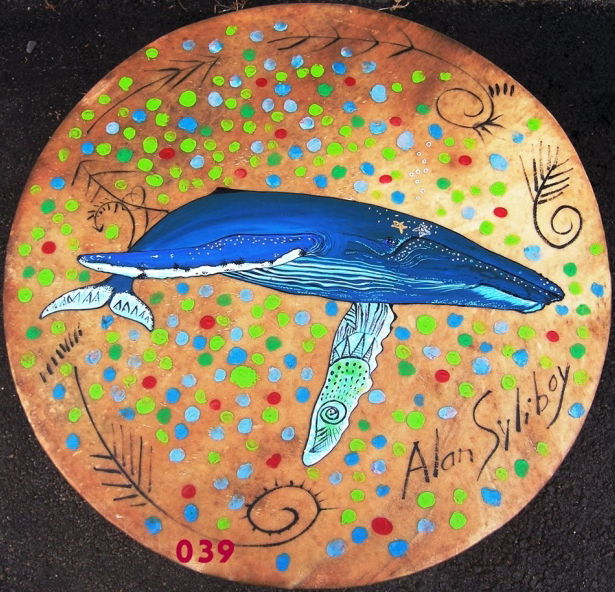Your Online Friendship Centre
Exit Site
Your Online Friendship Centre
Alan Syliboy is the artist behind the Mi’kmaq New Journeys design. He was born in Truro, Nova Scotia in the Millbrook First Nations community and has achieved much success as a Mi’kmaq artist and curator. In 1999, Syliboy designed a limited edition butterfly gold coin for the Royal Canadian Mint and by 2002 he had received the Queen’s Golden Jubilee Medal. Syliboy has also contributed his artistic skills to the CBC, the Canada Council for the Arts and the 2010 Vancouver Olympics.

Alan Syliboy grew up believing that native art was generic. “As a youth, I found painting difficult and painful, because I was unsure of my identity,” he said. But his confidence grew in 1972 when he studied privately with First Nations artist Shirley Bear. He then attended the Nova Scotia College of Art and Design, where 25 years later, he was invited to sit on the Board of Governors. Syliboy looks to the Indigenous Mi’kmaq petroglyph tradition for inspiration and develops his own artistic vocabulary out of those forms. His popularization of these symbolic icons has conferred on them a mainstream legitimacy that restores community pride in its Mi’kmaq heritage.
Syliboy incorporated traditional Mi’kmaq petroglyph themes into the New Journeys design: “I believe the Fiddlehead was where the Mi’kmaq double curve design originated. The double curve has many meanings. To some the curves represent plants which have the protective and curing powers of medicinal herbs. The mirror image of the double curve, reminds us to keep balance in our lives. Many curves together can symbolize community standing side by side, together in a special union.”

Syliboy’s work is currently on display at the Yarmouth branch of the Art Gallery of Nova Scotia.
New Journeys now has seven different themes that feature Indigenous artists and languages from across Canada. These themes aim to showcase and celebrate the diversity of Indigenous culture in this country. To explore the different themes, click the flower button at the top right of this page.